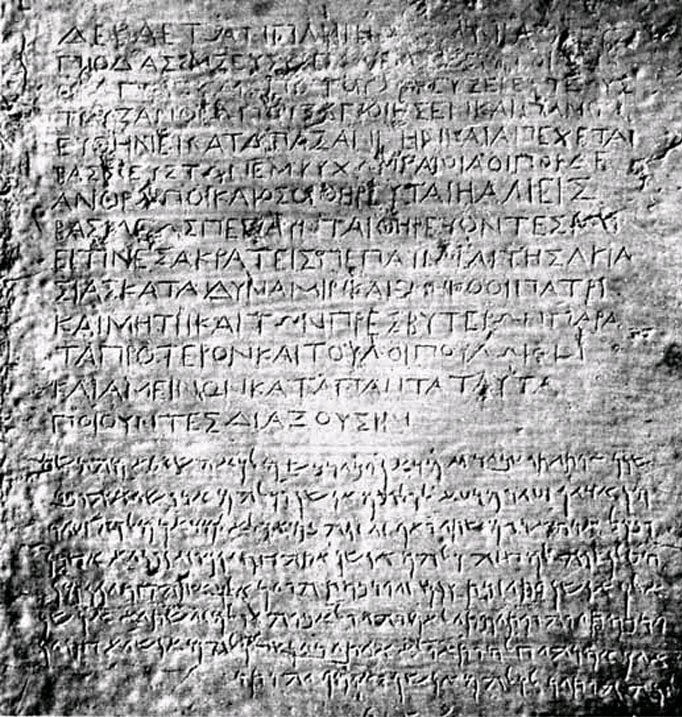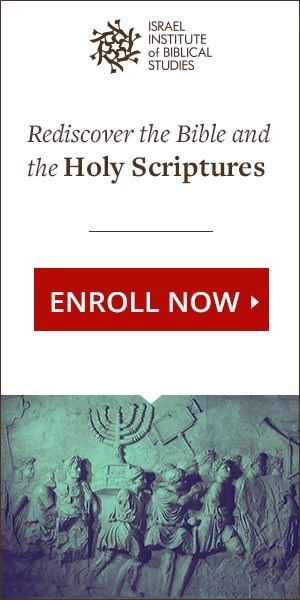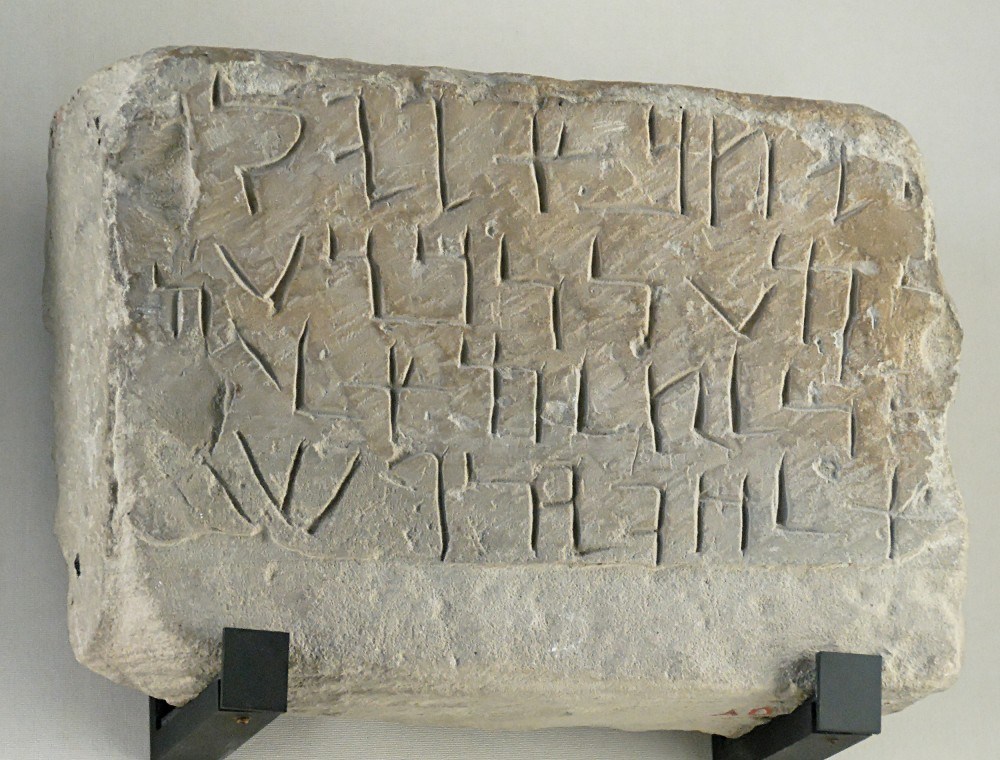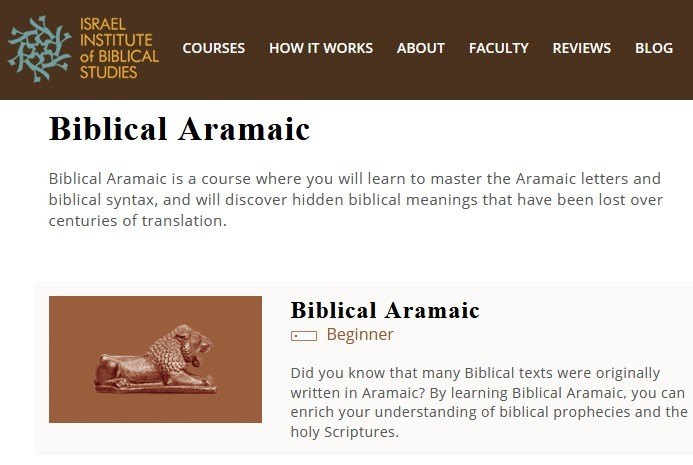
Aramaic is a language that is rich in biblical history and significance. It has seen a sustained period of sovereignty, followed by modern-day decline. However, there are several reasons why people should respect, honor, and study Aramaic Language, the spoken language of Jesus Christ.
Aramaic should be preserved because it is on the brink of extinction. This will be a great loss to humanity should it happen. Due to geographical fragmentation of native speakers, and ambiguous nomenclatures such as Syriac, Chaldean, Assyrian, Mandaic, etc. its use has reduced. An online course serves as a game-changer, providing a rare advantage to speakers.
 An Ideal Cradle for Beginners
An Ideal Cradle for Beginners
The Holy Bible is, without doubt, the quintessential source of inspiration and direction for billions of people across the world. In addition to its status as the most widely circulated book in the world, it makes perfect sense that an Institute committed to helping people understanding the Bible on all fronts exists.
The Israel Institute of Biblical Studies not just helps to make the Bible available but also makes provision for its complete understanding. Hence, through Biblical study and language courses, including the Biblical Aramaic course that we will describe later in this article, students are fully equipped with thorough knowledge. In the process, students connect with instructors in the Holy Land to understand these texts in their unadulterated languages.
At the end, students can stand on their own and interpret holy texts without aid, and the results that follow are usually life-changing. The repertoire of this Institute exemplifies a culture of excellence. A forged partnership with the Hebrew University of Jerusalem, one of the leading academic institutes in Israel and a leading biblical research institute in the world has produced unparalleled results.
Hundreds of thousands of students have profited from this great educational exposure. 302 zealous professors and 104,884 classes a year are by all standards remarkable. The helpful academic and societal setting is optimum for learning. In addition, the modern-day technology gives students an enjoyable ride to knowledge-derived happiness.
Other causes apart from biblical Aramaic include Modern Hebrew, Biblical Hebrew, discovering the Hebrew Bible, etc.
If you are interested in studying Biblical Hebrew, you can read my review on this topic by following this link. Also if you are interested in Biblical Greek, my article from this link shows you how to do this. If learning Modern Hebrew is attractive to you, read here my article about how you can study it online.
The Aramaic Language, the Spoken Language of Jesus Christ – A Trip Back in Time
Aramaic is a language that was used to run empires for over the course of 3,000 years. Sometimes, people refer to it as a group of languages, rather than a language because of its multiple forms. As a language with deep roots in religion and divinity, Jesus Christ spoke the Galilean dialect of the language most often, and it was a major language of the early Christians.
It was first used among the Aramean people around the 11th century BC. This region was in between Northern Levant and the Northern Tigris valley. Aram was a son of Shem, who was a son of Noah. Aram started out as an obscure nomadic group. It extended from the Anti Lebanon mountains to the Euphrates River and beyond and it ruled Mesopotamia (Modern day Iraq, Syria, Turkey).
Around 7th century BCE, Aramaic replaced Hebrew as the Lingua Franca of the Middle East. Since Chaldeans ruled the Babylonian empire, Aramaic was the official language of the Babylonian empire. However, even under the Neo-Assyrian empire, the language continued to gain prominence.
Between 600 and 200 BCE, Aramaic was essentially the Lingua Franca from Mesopotamia and Persia to Greece and even Egypt. The Neo-Babylonians and consequently, the Achaemenids continued to uphold the languages through properly trained scribes. Here, it was known as Imperial Aramaic.
Its use declined with the appearing of Arabic around 650 AD. However, Aramaic has sustained its relevance until today. Over recent centuries, Aramaic has partly been replaced and partly evolved into Arabic.
Millions of people still speak Aramaic Language today. Both literarily and liturgically, local Christians found in Iraq, North-Eastern Syria, parts of Turkey, Iran, Israel, Armenia, Georgia, Bahrain (before Islam) Southern Russia, Azerbaijan, and a host of other places. This underlines just how important Aramaic might be to you.
Variations of Aramaic Language
There are several ways to classify Aramaic, depending on the descriptive purpose.
· In relation to time, it can be divided into Old, middle, and modern Aramaic. Old Aramaic was from 1100 BC to 200AD. Middle Aramaic was from 200 to 1200 AD. Modern Aramaic was from 1200 AD to the present.
· Depending on geographical distribution by the Euphrates River, it is divided into an eastern and western group.
· Jewish Aramaic: The most popular variation, and the one found on the Dead Sea Scrolls.
· Neo-Aramaic: Also known as Modern Aramaic, it consists of a group of related languages. It has up to 19 dialects as of today.

The Influence of Aramaic on the Hebrew Bible
Aramaic heavily influences other languages such as Hebrew, Phoenician, and Arabic. They all belong to the Semitic family. These languages have their roots in the Aramaic alphabet. Aramaic and Hebrew were used together in the Bible, so they have both had an influence on each other as well as many similarities. These changes are evident in Hebrew grammar, lexicon, and even Masoretic vocalization. Hebrew texts have been written in Aramaic style, which is distinctively “square.”
While Hebrew and Aramaic are closely related West Semitic languages, they are two distinct languages and are therefore not the same. Common names of people and places in the Bible are Aramaic instead of Hebrew. Majority of texts written in Hebrew were to the Jews, while those written in Aramaic were to the gentiles. Aramaic is found in the Hebrew Bible in the books Ezra and Daniel. These portions of Biblical Aramaic are often referred to as “Chaldee.”
The importance of understanding Aramaic for the Old and New Testaments is rooted in the need to live in accordance with God’s expectations. The Old Testament is majorly written in Hebrew, while the New Testament is majorly written in Greek. Understanding the book of Daniel and Babylonian captivity means that the understanding of Biblical prophecy is established.
Even though Hebrew was the Biblical language and for scholars, Aramaic was the primary language of Palestinian Jews in the first century AD. Thus, Jesus spoke the language.
Aramaic Portions of the Bible
The Old Testament parts include large portions of the books of Ezra and Daniel. Other Aramaic parts include:
· Genesis 31:47. The word, Jegar Sahadutha refers to a pile of testimony or witness heap. It was a name given by Laban, a Syrian. This was after he made a covenant with Jacob.
· Jeremiah 10:11. This whole verse stands alone as the only Aramaic part of the book of Jeremiah.
Several Aramaic phrases are in the New Testament. The gospels and the epistles as well. They include:
· Matthew 27: 46. ‘Eloi, Eloi, lama Sabachthani?’ This means “My God, my God, why have you left me?”
· Mark 5:41: ‘Talitha cumi.’ This in English, means “…Girl, arise!” Jesus raised Jairus’ daughter with this phrase.
· Mark 7:34: ‘Ephphatha.’ In English, this means “Be opened.”
· Mark 14:36: ‘Abba.’ This means “My father.”
· John 1:42: In this verse, Jesus named Simon Cephas, which means “Rock”
· John 20:16: Here, Mary was grieving after the death of Jesus. Jesus called out her name, and when she saw him, she cried out in Aramaic, saying “Rabboni!” which means master.
There are also worthy mentions in Isaiah 36:11, 2 Kings 18:26.
Study Aramaic Language, the Spoken Language of Jesus Christ
An ardent reader would notice that the times that Jesus used Aramaic were occasions of huge meaning and significance. As such, it shows that Jesus Christ expressed very deep emotions in Aramaic.
Thus, the Hebrew Bible becomes easier to understand with the knowledge of Aramaic. Even if one understands biblical Hebrew, the understanding of the whole Bible would not be complete without Aramaic.
Aramaic is in all major parts of the Bible. It is found in the Law, Prophets, and Writings. In the New Testament, Jesus and his disciples often communicated in the language. It also influences Mishnaic Hebrew. Additionally, it is the language of the Jewish Talmud
Hebrew and Aramaic have often be regarded as sister languages. Having both been of Semitic origin, God chose to reveal his word through these two languages.
Course Program
In the process of multiple translations, deep meaning in the Bible has been lost. Biblical Aramaic ensures that students recover these lost treasures. In addition, Aramaic alphabet, biblical reading skills, basic translation skills, historical context, Aramaic syntax are other benefits of the program.

In this course, students will use the Biblical books, Daniel and Ezra to learn Biblical Aramaic. The ancient scriptures found in these books will give a simple vocabulary to work with. This will be leading to a better understanding of this historical language.
Syllabus Overview
The 30-unit syllabus kicks off with welcoming students to Aramaic in its introduction. Students will learn everything about the ancient language, its roots, relations, and use. Unit 2 kicks off immediately with the study of basic noun and adjective forms, using the books of Ezra and Daniel to gain insight.
Units 3 and 4 deal with the definite article and construct chains, which will be explained in details. Unit 5 explores the famous story of Daniel in the lions’ den. Along with its literary and linguistic features, students will also use this opportunity to revise the past units. Independent pronouns, pronominal suffixes cover the next two units. Unit 8 discusses the fiery furnace in its historical and linguistic perspectives.
In Aramaic, there are various noun-adjective combinations. Alongside sentence creation without the use of verbs, unit 9 thoroughly explains this. Suffix and prefix conjugations are found in units 10 and 11, respectively. Unit 12 focuses on letters exchanged in the book of Ezra. Unit 13 shows different forms of the participle and its impact on biblical Aramaic. Imperatives and infinitives are outlined in unit 14, and midway through the syllabus, a revision of all the units is done.
The second half of the course starts with a gross picture of the Aramaic verbal system in its first two units. A well-known story, the writing on the wall follows in unit 18. The Doubled Binyanim is also discussed in details in the following two units with examples cited from the books of Ezra and Daniel. Unit 21 is a review of the Binyanim and a differentiation between meaning and forms of Peil Binyan and Peal.
Unit 22 explores the uniqueness of Aramaic compared to other languages from the demonstrative pronoun standpoint. Unit 23 teaches direct object marking and flexes the translation muscles of students using the books of Ezra and Daniel. All knowledge is almost useless without application, so unit 24 explores the Biblical Aramaic lexicon. In addition, students learn what to do in unfamiliar territories. Unit 25 discusses Ezra 6: Rebuilding. This is used as a review of previous lessons.
Units 26 and 27 give insight to the understanding of Aramaic by learning interdentals, and emphatics under consonant shifts. Units 28 and 29 give weak roots, while including the visions of Daniel and finally, unit 30 rounds up the exciting course in style.
The course is held on a regular basis. Two hours weekly for 9 months. It is fully accredited and worth 3 credits at the Hebrew University of Jerusalem
Testimonies and Reviews
This course has received excellent five-star feedbacks. A particular satisfied student described it as challenging, but not difficult because of the pace of the course. Another student made remarks on the teachers. He described them as the key to effective learning of the language.
Majority of people were happy because the course did not interfere with their daily activities. Finally, students hailed the ability to employ modern-day technology to get ancient knowledge.
A Process Worth Beginning
The importance of learning Aramaic cannot be over-emphasized. Therefore, learning it in the right way is key to a full understanding of the Bible, since its influence cuts across the Bible. Only about half a million people still, speak the Aramaic language today. This means that it faces the risk of extinction and understanding it will provide a rare advantage to biblical scholars.
The historical significance, relationship with Hebrew, and course description are all outlined to give passionate learners insight. Register for the next class today.
